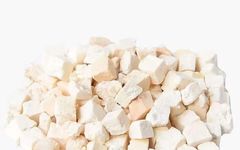This product is the dried sclerotium of the fungus Poria cocos (Schw.) Wolf, belonging to the family Polyporaceae. It is harvested from July to September. After excavation, the soil and sand are removed, and the sclerotia are piled up to induce sweating, then spread out to dry until the surface is dry, followed by repeated sweating until wrinkles appear and most of the internal moisture is lost. It is then dried in the shade, referred to as "Fu Ling ge"; alternatively, fresh Fu Ling can be cut into different parts and dried in the shade, referred to as "Fu Ling kuai" and "Fu Ling pian" respectively.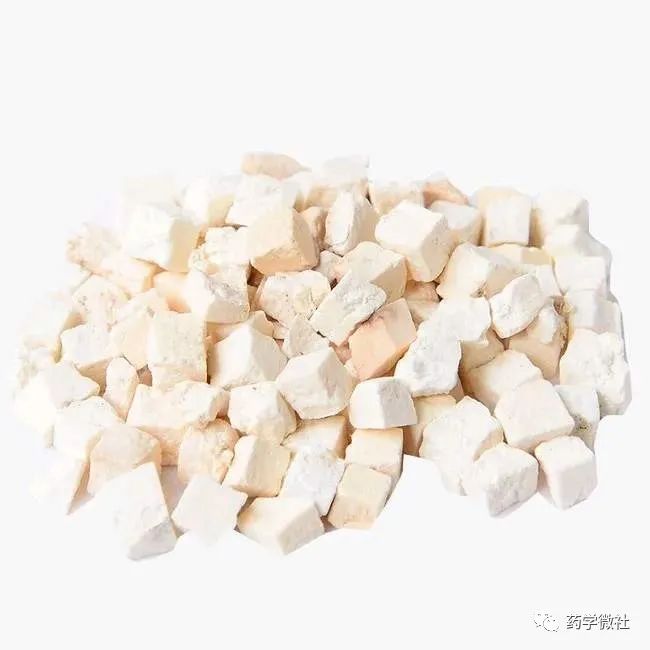
【Characteristics】Fu Ling ge is spherical, oval, flat, or irregular in shape, varying in size. The outer skin is thin and rough, brown to dark brown, with distinct wrinkled textures. It is heavy, solid, and has a granular cross-section, some with fissures; the outer layer is light brown, while the inside is white, with a few being light red, and some containing pine roots. It has a faint odor, a bland taste, and is sticky when chewed.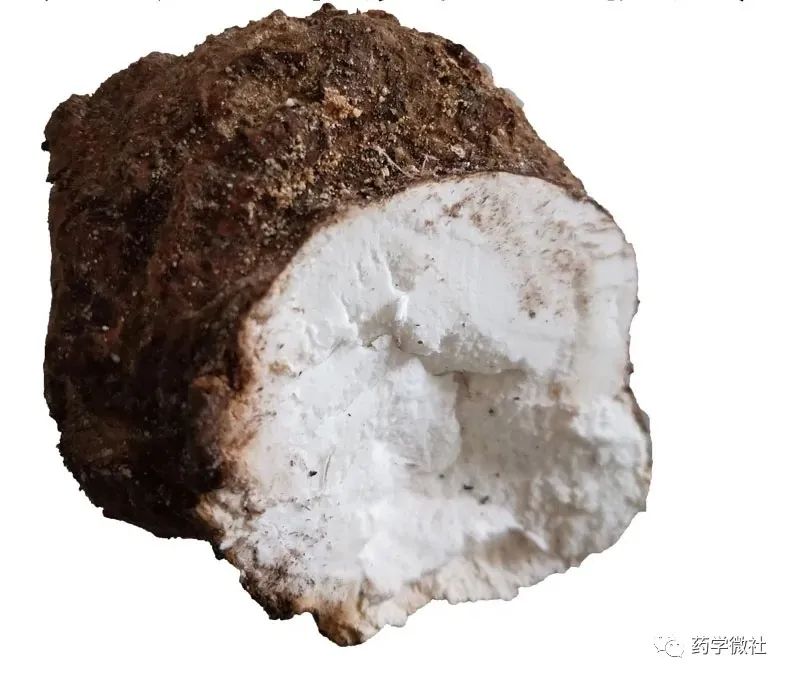
Fu Ling kuai is the peeled and cut Fu Ling, in cubic or thick slice form, varying in size. It is white, light red, or light brown. Fu Ling pian is the peeled and cut Fu Ling, in irregular thick slices, varying in thickness. It is white, light red, or light brown. 【Identification】(1) The powder of this product is grayish-white. Irregular granules and branched clusters are colorless and gradually dissolve in water and chloroform. The mycelium is colorless or light brown, slender, slightly curved, branched, with a diameter of 3-8μm, and some up to 16μm. (2) Take a small amount of the powder, add one drop of potassium iodide solution, and it shows deep red. (3) Take 1g of the powder, add 50ml of ether, treat with ultrasound for 10 minutes, filter, evaporate the filtrate, and dissolve the residue in 1ml of methanol to prepare the test solution. Take 1g of Fu Ling reference material and prepare the reference solution in the same way. Test by thin-layer chromatography (General Rule 0502), applying 2μl of each solution on the same silica gel G plate, using toluene-ethyl acetate-formic acid (20:5:0.5) as the developing agent, develop, dry, spray with a 2% vanillin-sulfuric acid solution-ethanol (4:1) mixture, and heat at 105°C until the spots are clearly visible. In the test solution chromatogram, the main spots showing the same color as the reference material chromatogram appear at corresponding positions. 【Inspection】Moisture content must not exceed 18.0% (General Rule 0832, Method 2). Total ash content must not exceed 2.0% (General Rule 2302). 【Extractives】Determined by the method for determining alcohol-soluble extractives (General Rule 2201) using hot extraction, with dilute ethanol as the solvent, not less than 2.5%.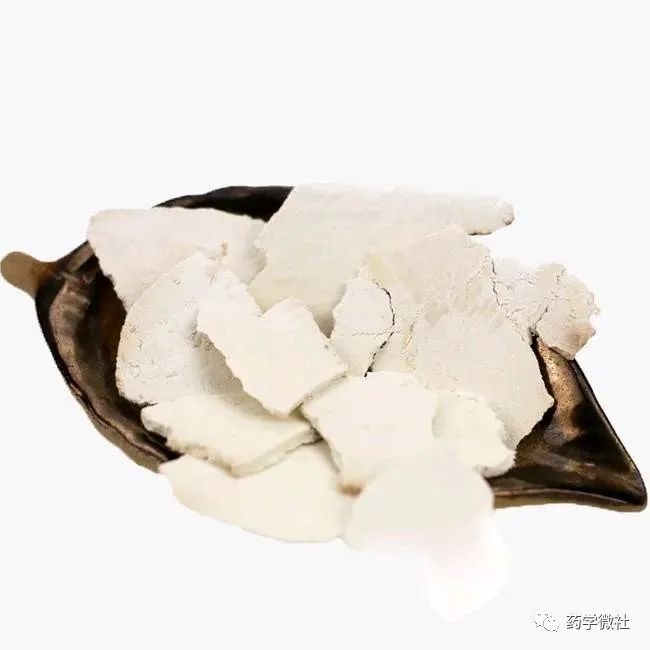
【Preparation】Take Fu Ling ge, soak, wash, moisten, steam slightly, promptly peel, cut into blocks or thick slices, and dry in the sun. 【Characteristics】【Identification】【Inspection】【Extractives】 are the same as the medicinal material. 【Nature and Taste】 Sweet, bland, neutral. It enters the Heart, Lung, Spleen, and Kidney meridians. 【Functions and Indications】 Promotes urination and leaches out dampness, strengthens the Spleen, calms the mind. Used for edema, reduced urination, phlegm-dampness causing dizziness, Spleen deficiency with poor appetite, loose stools, anxiety, and insomnia. 【Dosage】 10-15g. 【Storage】 Store in a dry place, protect from moisture.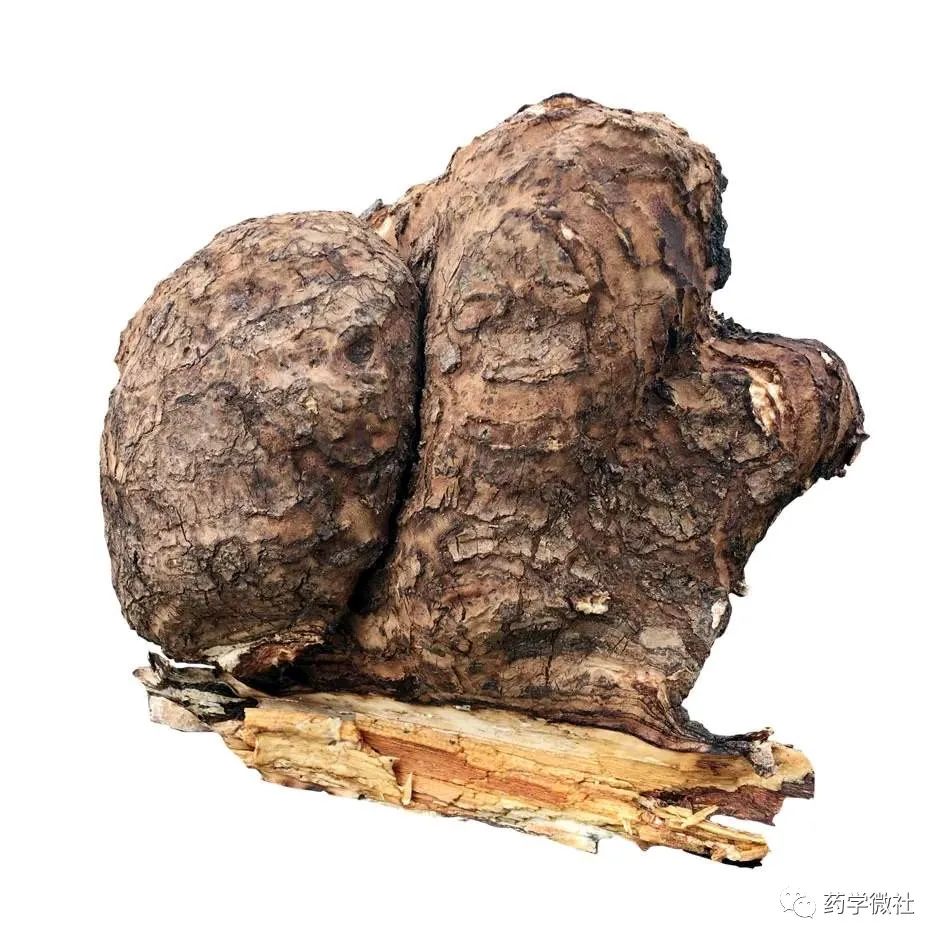
1. Time and Method of Cultivating Fu Ling 1.1 Time of Cultivation Fu Ling is generally planted from May to June each year, but the specific time should be determined according to local climatic conditions. However, it should not be delayed until July or August, as the hot weather starting in July is not conducive to the survival of Fu Ling, leading to low survival rates and economic losses. 1.2 Method of Cultivation (1) Preparation of Cultivation Material Planting Fu Ling differs from planting other medicinal materials because it is a parasitic fungus, so preparation of materials is necessary before planting. First, prepare Pinus massoniana (Masson’s Pine), as it provides the most favorable nutrients for Fu Ling. Then, segment the pine wood into sections of about 1 meter in length, remove the bark, place them on the ground, and cover with straw. (2) Land Preparation Choose sandy sloped land with good drainage for planting. After selecting the site, deeply plow the soil, finely rake it, and then pile the soil for disinfection. About half a month before inoculation, deep plowing should be done again to thoroughly remove impurities and pests from the soil, ensuring the growth of Fu Ling. (3) Timely Inoculation Fu Ling is usually inoculated in spring and autumn. First, select suitable strains, then open pits along the slope on the prepared land, place the segmented wood in the pits, and disinfect the strains to minimize bacterial infection. After disinfection, evenly place the Fu Ling at both ends or joints of the wood segments, sprinkle a layer of termite repellent, and finally cover lightly with soil.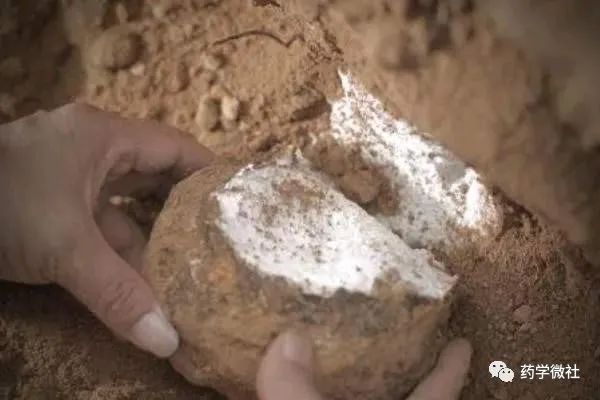
(4) Daily Management About a week after inoculation, white mycelium will begin to grow, and it is important to check the inoculation area for growth. If there are any gaps, they should be replanted promptly. Every 10 days, inspections should be conducted to check for dead or foreign fungi; if found, they should be removed immediately to prevent infection of other healthy strains. Attention should be paid to the moisture in the field; if there is too much moisture, it should be drained, and if the wood segments are exposed above the ground, soil should be added. (5) Disease and Pest Prevention Throughout the growth of Fu Ling, there are many diseases and pests, mainly fungal infections such as Trichoderma and Penicillium. A common prevention method is to cover the wood segments with a layer of straw or film during soil preparation, which can effectively prevent these issues, or use fungicides like carbendazim for spraying.
